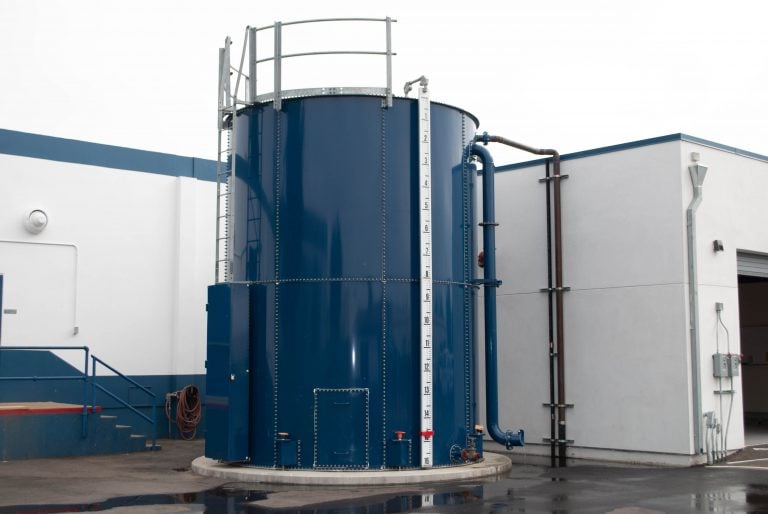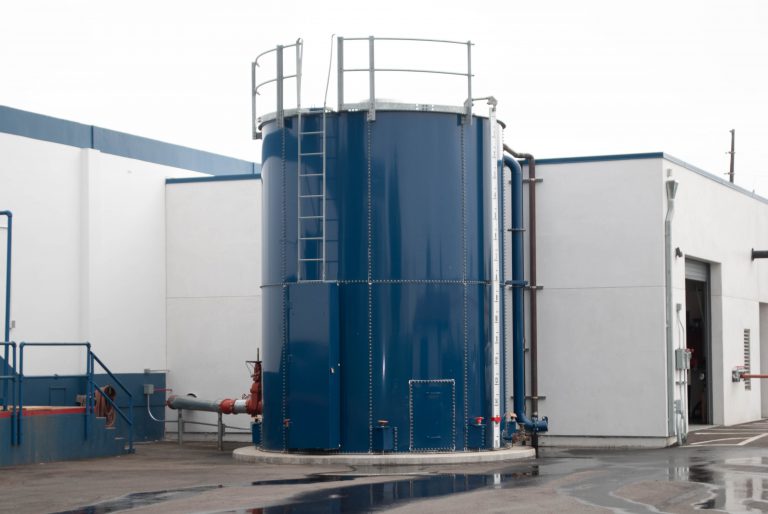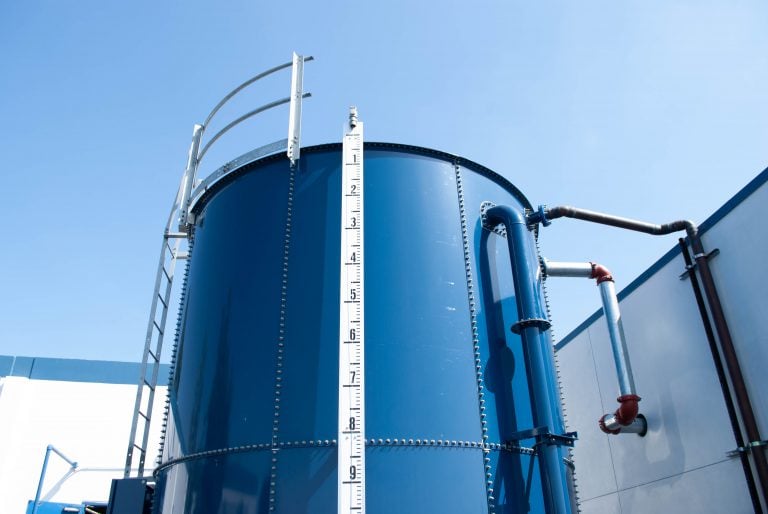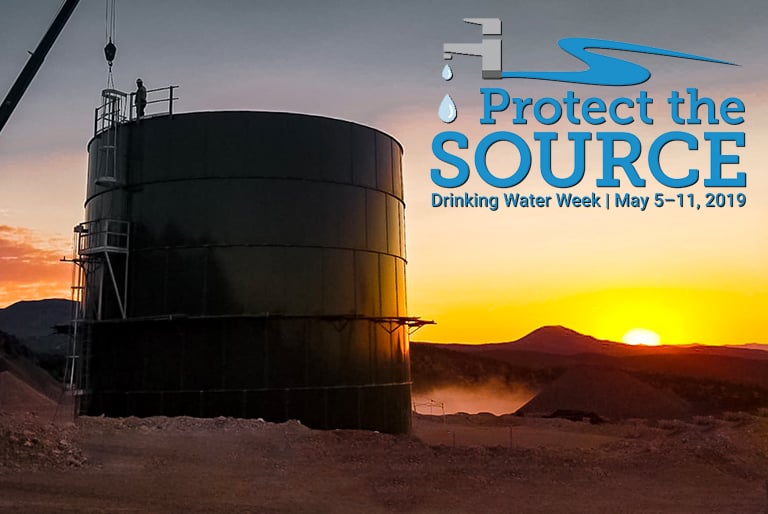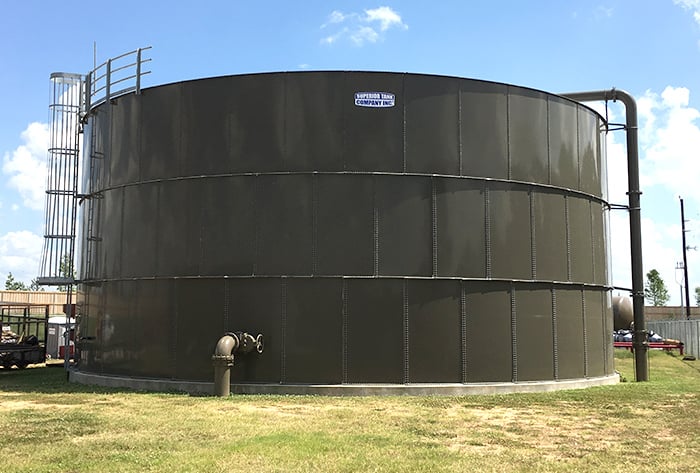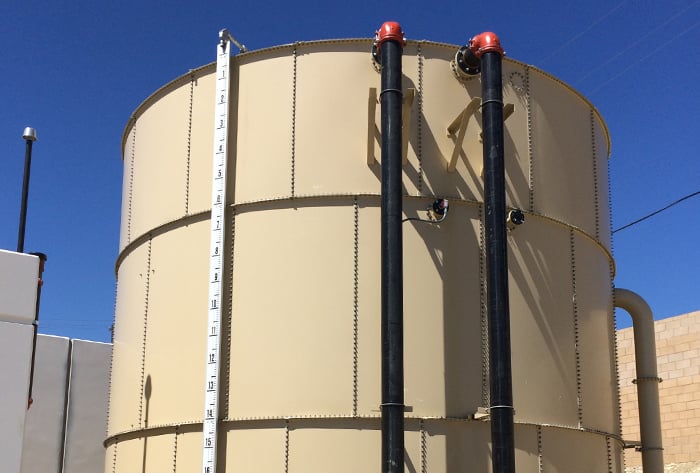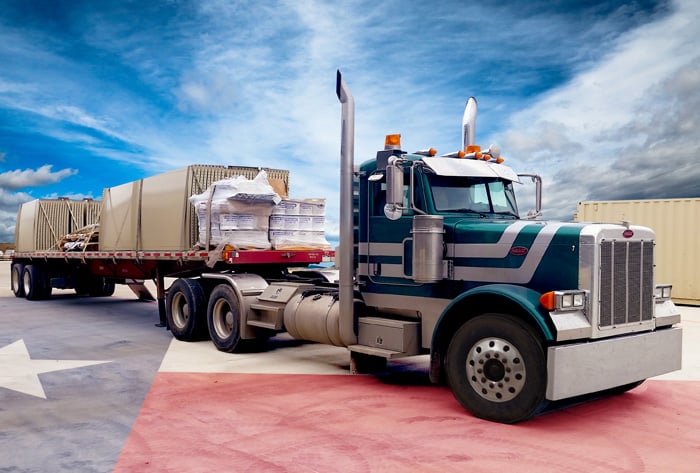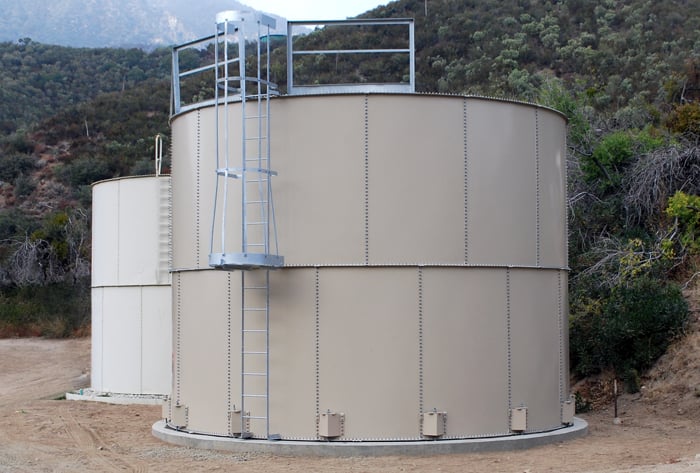
The latest edition of the American Society of Civil Engineering (ASCE) 7-16 Standard for Minimum Design Loads and Associated Criteria for Building and Other Structures published in August 2017, includes an exception to the AWWA D103. Section 15.7.7.2 relating to bolted steel tanks, includes new requirements regarding bolted tanks with an embedded steel base setting ring:
- “b. For Type 6 tanks, the overturning ratio, J, as determined using AWWA D103, Eq. (14-32) shall not exceed 0.785.” This new verbiage has significance to bolted tank design as it impacts where a bolted tank with a Type 6 foundation can be used.
A Type 6 bolted steel tank utilizes a steel base ring shell embedded into the concrete foundation which also serves as the tank bottom. The J ratio relates to the seismic loading and is a criteria used to determine if the storage tank requires anchorage. A value of less than 0.785 indicates the tank wall will not experience uplift and does not need anchorage. Conversely, a J ratio greater than 1.54 requires the bolted tank to be mechanically anchored. Ratios between the two values may or may not require mechanical anchorage depending on other factors.
Essentially, the ASCE is requiring embedded shell bolted steel tanks not to be used in areas where uplift occurs due to seismic activity. The concern is there are no specific design requirements for the anchorage of the shell to foundation and the concrete bottom included in the AWWA D103 therefore it is difficult to ensure ductility of the tank to foundation connection. There is a risk of the shell separating from concrete tank bottom during a seismic event as a design criteria does not exist to ensure the connection is properly designed. ASCE 7-16 does not restrict bolted tanks with other foundation types; only tanks with an embedded shell.
For most applications, Superior Tank Co., Inc. will design our bolted tanks to use foundation types 1 through 5. With foundation types 1 through 5, the storage tank will include a steel bottom which structurally ties into the bolted tank shell creating one uniform structure.
This new terminology is another example of how bolted tank standards are continuously evolving resulting in more resilient bolted steel tanks.
